Phone: (714) 695-1566
Fax: (714) 695-1553
Email: info@salinaspt.com
23655 Via Del Rio, Suite C
Yorba Linda, CA 92887
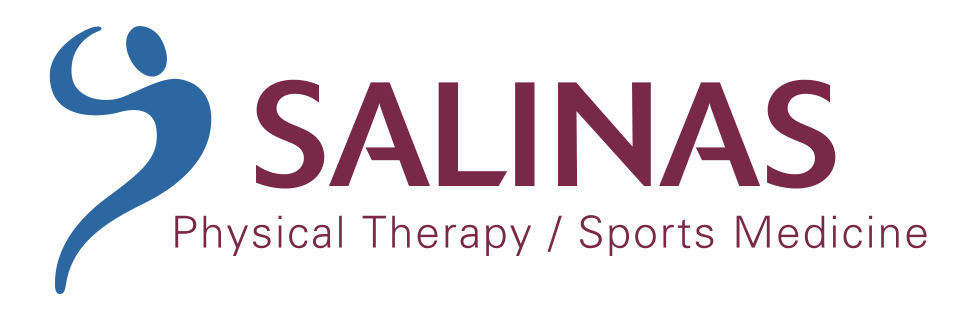
Phone: (714) 695-1566
Fax: (714) 695-1553
Email: info@salinaspt.com
23655 Via Del Rio, Suite C
Yorba Linda, CA 92887
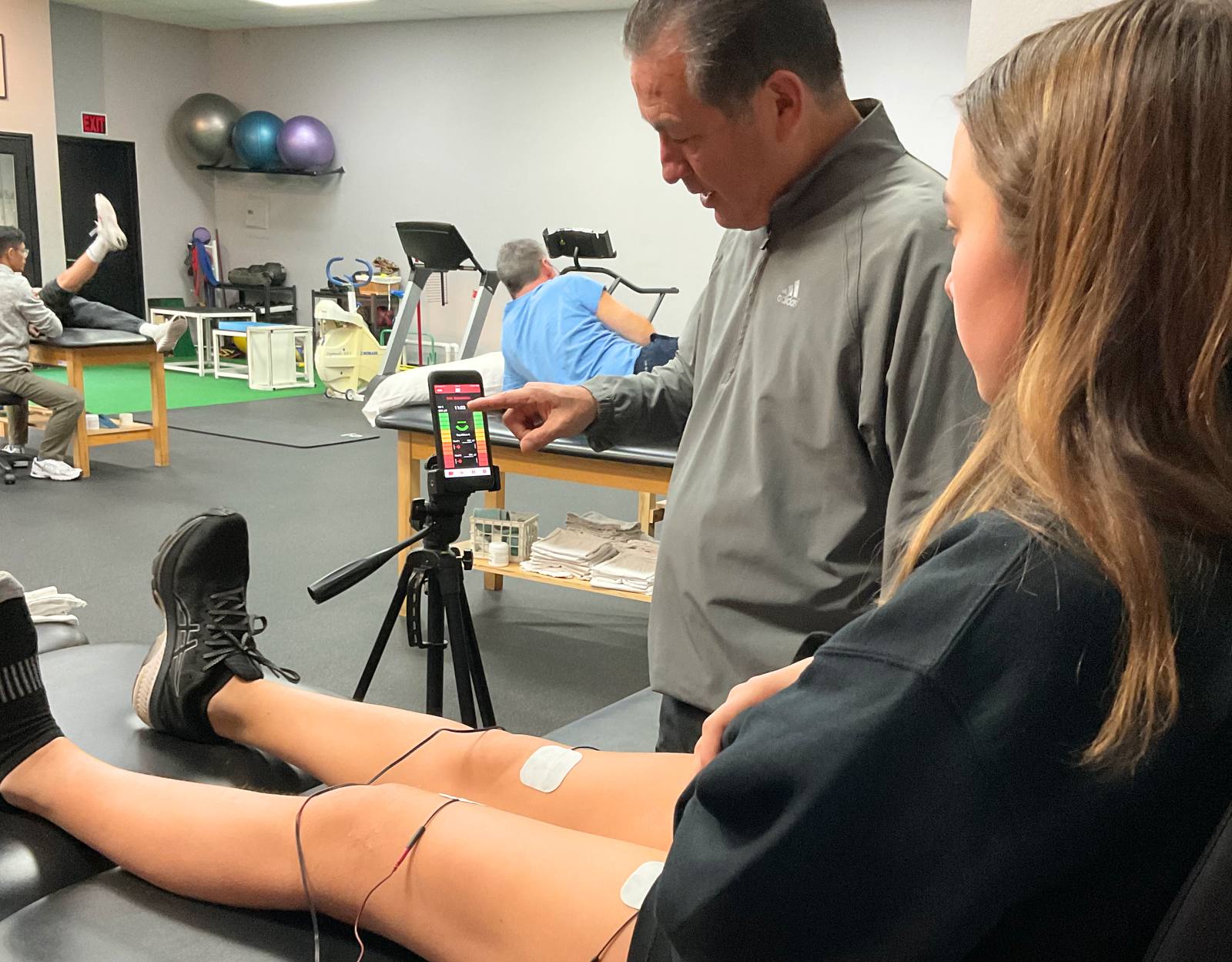
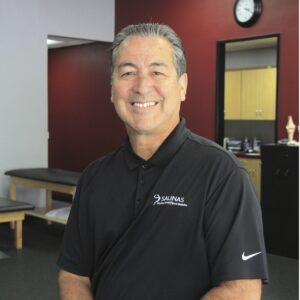
Ruben Salinas is the founder and president of Salinas PT.
Electromyographic Biofeedback may seem like a mouthful, but the rehab benefits are mounting. The primary use of EMG biofeedback is to monitor voluntary muscle activation as it relates to neuromuscular control. This treatment method assists with retraining the body’s natural electrical system to contract muscles – a foundational concept after any injury.
Using the body’s electrical system early on through voluntary contraction helps re-educate your neuromuscular system. This process increases both motor control and the strength of a weakened muscle. The “order of recruitment” concept supports using biofeedback to enhance voluntary contraction. The order is based on the Hennemans size principle, which states that as more force is needed, motor units are recited in a precise order from smallest to largest.
Most people who suffer from an injury or painful condition experience inhibition. Inhibition is a lack of voluntary muscle contraction resulting from an injured limb, muscle loss, effusion, pain, swelling, etc.
As a result of inhibition, muscle atrophy can occur, which has numerous adverse effects, including muscle weakness, asymmetry, avoidance patterns, and increased re-injury risk.
Electrode sensors are applied to the patient’s skin on top of the desired muscle structure. Once the unit has been calibrated to specific output ranges, patients are cued to contract their muscles voluntarily. The body’s natural electrical current being used to activate the muscle is measured and displayed on screen in real-time.
The capability of biofeedback devices has kept up with technology in creative ways. Patients now have the ability to train, play games, and track their performance, using biofeedback. This real-time visualization helps you learn what true neuromuscular activation feels like.
Ultimately the data provided by the biofeedback unit help motivate patients to engage in their rehabilitation and achieve better health outcomes by way of regained neuromuscular control and functionality.
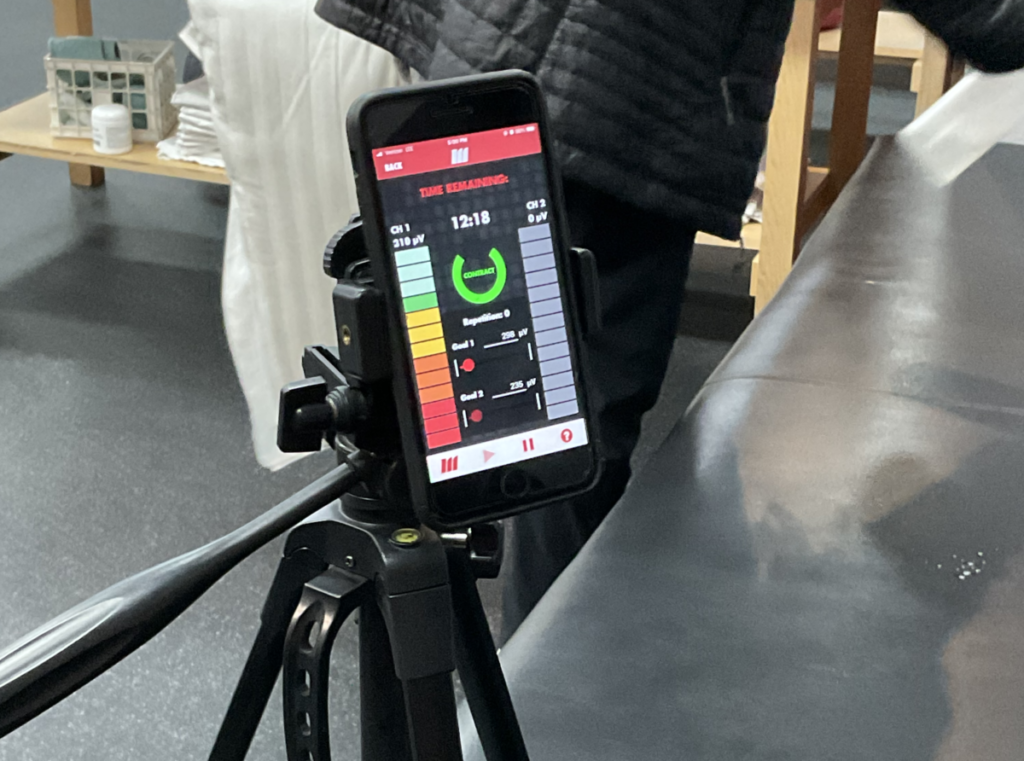
ACL injuries are often a slow and steady recovery process. Physical therapists are masters at balancing the art of keeping the knee mobile, without over-stressing the surgical repair. A randomized controlled trial concluded that at 6 weeks, passive knee extension range of motion and strength was significantly better in the EMG Biofeedback group compared to the control group without using EMG Biofeedback.
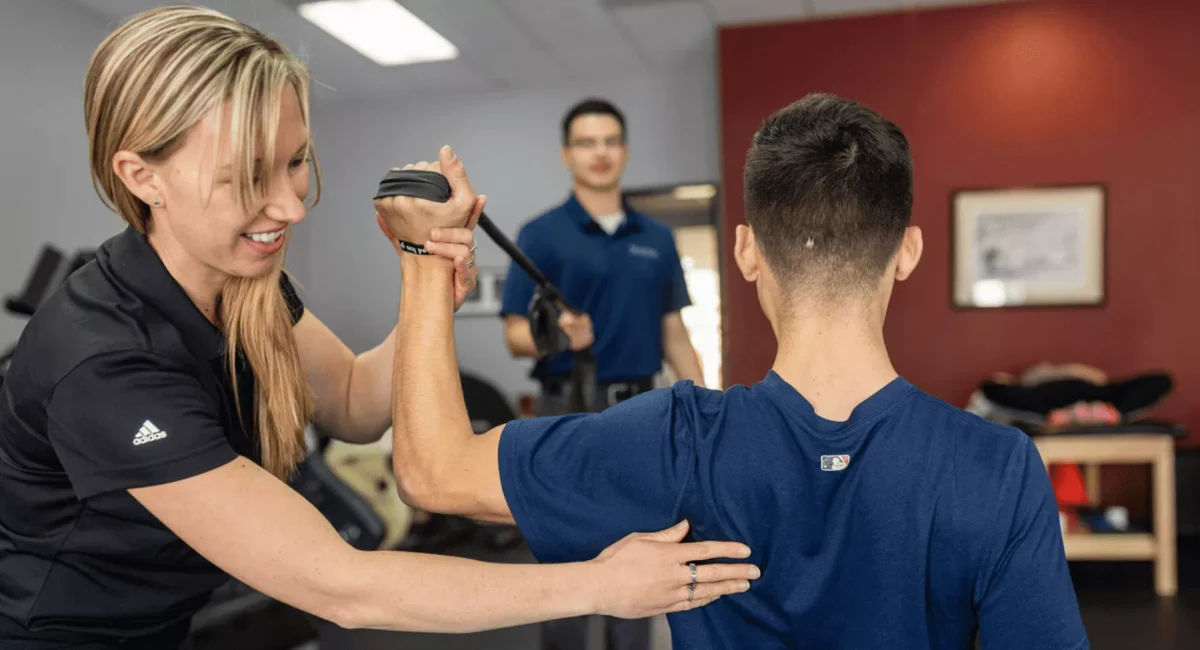
The ability to consciously correct using EMG biofeedback in a recent study was used to increase activation levels in specific exercises and correct scapular dysfunction. Although lack of kinematic data limits the interpretation of the results, this study suggests that conscious correction of scapular muscles helps minimize compensation of the upper trapezius muscles when performing various forms of shoulder exercises.
When suffering from an injury the surrounding muscles go into a protective response. An example of this is when touching a hot stove, your body instinctively rejects the pain signal sent from your brain and pulls away to avoid injury.
Similar to measuring muscle activation, EMG biofeedback can be used to deactivate an overactive muscle. Using EMG biofeedback, patients learn how to target an overactive muscle to release tension and reduce pain.
The water can often appear cloudy when it comes to new treatment methods in the physical therapy world. While flashy equipment and clever marketing may seem to deliver the “silver bullet“, we rely on the data prior to implementation. The science is clear that EMG Biofeedback devices allow patients to actively participate in their recovery, while simultaneously speeding the recovery process by way of neuromuscular control. If you or someone you know is suffering from injury, or painful condition, our team is dedicated to helping them improve the quality of their life. Contact us using the link below to get started.
2. Christanell F, Hoser C, Huber R, Fink C, Luomajoki H. The influence of electromyographic biofeedback therapy on knee extension following anterior cruciate ligament reconstruction: a randomized controlled trial. Sports Med Arthrosc Rehabil Ther Technol. 2012 Nov 6;4(1);41. doi: 10.1186/1758-255-4-41. PMID: 23126601: PMCID: PMC3582470psation
Powered by uti pan card agency apply